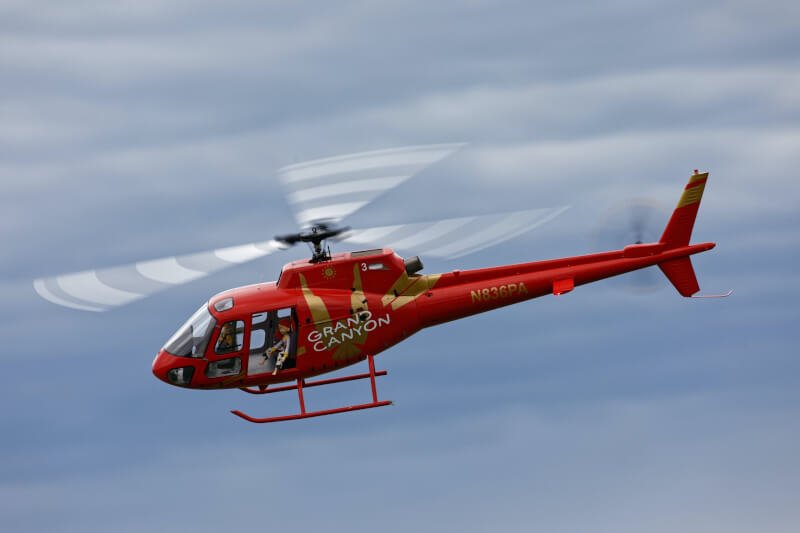Are you an avid RC helicopter enthusiast looking to extend your flight time? Choosing the right RC heli battery is essential in achieving longer flights and maximizing your enjoyment. In this article, we will guide you through the process of selecting the perfect battery for your RC heli, taking into consideration factors such as capacity, voltage, and weight. By following our expert tips and advice, you’ll be soaring through the skies for extended periods, experiencing the thrill and exhilaration of longer flight times. So, let’s get started and discover how to choose the right RC heli battery for longer flight times.

Factors to Consider When Choosing an RC Heli Battery
Capacity
When choosing an RC Heli battery, one of the most important factors to consider is its capacity. Capacity refers to the amount of energy the battery can store, and is typically measured in milliamp-hours (mAh). A higher capacity battery will allow for a longer flight time, as it can provide more power to the RC Heli. However, it’s important to note that higher capacity batteries can also be heavier, which may impact the overall performance of the helicopter.
Voltage
The voltage of an RC Heli battery determines the power output, and it’s crucial to choose a battery with the correct voltage for your specific helicopter model. The most common voltage options for RC Heli batteries are 3.7V, 7.4V, and 11.1V. It’s important to check the specifications of your RC Heli to determine the appropriate voltage range. Using a battery with the wrong voltage can damage the helicopter or lead to underperformance.
Discharge Rate
The discharge rate of an RC Heli battery refers to how quickly it can release its energy. It is usually measured in a C-rating, which indicates the multiple of the battery’s capacity that it can discharge per hour. For example, a 1C battery can discharge its full capacity in one hour, while a 20C battery can discharge 20 times its capacity in one hour. It’s important to choose a battery with a discharge rate that matches the power demands of your RC Heli.
Size and Weight
The size and weight of an RC Heli battery are crucial factors to consider, as they can impact the overall flight performance of the helicopter. A battery that is too heavy or large may make the RC Heli unbalanced and difficult to control. It’s essential to choose a battery that fits properly in the designated battery compartment and is lightweight enough to allow for smooth and agile flight maneuvers.
Battery Chemistry
RC Heli batteries are available in different chemistry types, each with its own advantages and considerations. The three most common types are Nickel-Cadmium (NiCd), Nickel-Metal Hydride (NiMH), and Lithium Polymer (LiPo). NiCd batteries are known for their durability and tolerance for overcharging, but they have a lower energy density. NiMH batteries offer a higher energy density than NiCd batteries, but they can suffer from self-discharge over time. LiPo batteries are the most popular choice for RC Heli applications due to their high energy density and light weight, but they require special care in handling and charging to avoid damage or accidents.
Understanding RC Heli Battery Terminology
mAh
mAh stands for milliamp-hour, which is a unit of measurement used to quantify the capacity of an RC Heli battery. It represents the amount of current that the battery can deliver over one hour. In general, a battery with a higher mAh rating will allow for a longer flight time.
C Rating
C rating is a measure of the discharge rate capability of an RC Heli battery. It indicates the multiple of the battery’s capacity that it can discharge per hour. For example, a 20C battery can discharge 20 times its capacity in one hour. A higher C rating indicates a more powerful and faster discharge rate.
S Rating
S rating refers to the number of cells connected in series within an RC Heli battery pack. Each cell typically has a voltage of 3.7V, so a 3S battery pack would have a voltage of 11.1V. The S rating determines the overall voltage of the battery and should match the specifications of the RC Heli for optimal performance.
Parallel Connection
Parallel connection refers to connecting multiple battery packs together to increase the overall capacity and flight time. When batteries are connected in parallel, the voltage remains the same, but the capacity is combined. This allows for longer flight times without increasing the voltage.
Series Connection
Series connection involves connecting multiple battery packs together to increase the overall voltage. When batteries are connected in series, the capacity remains the same, but the voltage is combined. This can provide increased power for RC Helis that require higher voltage levels.

Determining the Capacity You Need
Evaluate Flight Time Requirements
To determine the capacity you need for your RC Heli battery, start by evaluating your flight time requirements. Consider how long you would like to fly your helicopter continuously without the need for recharging. This will give you a baseline for the minimum capacity you should look for in a battery.
Consider the RC Heli’s Power Consumption
Next, consider the power consumption of your RC Heli. Different models and sizes of RC Helis have varying power requirements. Check the specifications of your helicopter or consult the manufacturer’s recommendations to understand how much power it consumes during operation. This information will help you determine the minimum capacity you need the battery to have to meet the power demands of your RC Heli.
Calculate Desired Capacity
Once you have evaluated your flight time requirements and understood the power consumption of your RC Heli, you can calculate the desired capacity for your battery. Start by multiplying the power consumption of your RC Heli (in amps) by the desired flight time (in hours). Then, convert the result to milliamp-hours (mAh) by multiplying it by 1000. This will give you an estimate of the minimum capacity you need in your RC Heli battery.
Choosing the Right Voltage
Check RC Heli Specifications
To choose the right voltage for your RC Heli battery, it’s important to check the specifications of your helicopter. The specifications should indicate the recommended voltage range for optimal performance. Using a battery with a voltage outside of this range can result in poor performance, decreased flight time, or even damage to your RC Heli.
Consider Higher Voltage Options
While it’s essential to choose a battery with the correct voltage for your RC Heli, consider exploring higher voltage options if your helicopter can handle it. Higher voltage batteries can provide increased power output, resulting in better performance, faster flight, and improved agility. However, it’s crucial to ensure that your RC Heli is compatible with higher voltage options before making the switch.

Importance of Discharge Rate
Identify the Maximum Continuous Discharge Rate
The discharge rate of an RC Heli battery plays a critical role in delivering the necessary power to your helicopter. It’s important to identify the maximum continuous discharge rate specified by the manufacturer. This ensures that the battery can consistently supply the required power without overheating or being underpowered during intense maneuvers.
Consider Burst Discharge Rate
In addition to the maximum continuous discharge rate, it’s beneficial to consider the burst discharge rate of an RC Heli battery. The burst discharge rate indicates the maximum amount of current that the battery can deliver in short bursts. This is especially important if your RC Heli requires sudden bursts of power for high-speed flying or aggressive maneuvers. Choosing a battery with a higher burst discharge rate can provide that extra boost when needed.
Finding the Best Size and Weight
Ensure the Battery Fits the RC Heli
Choosing the right size and weight for your RC Heli battery is crucial for optimal performance. It’s important to ensure that the battery you choose fits properly in the designated battery compartment of your helicopter. An improperly sized battery can affect the balance and stability of your RC Heli, making it difficult to control and increasing the risk of accidents.
Balance Weight and Flight Performance
When considering the weight of the battery, it’s necessary to find a balance between flight performance and flight time. While a larger capacity battery may provide longer flight times, it will also be heavier and potentially impact the agility and responsiveness of your RC Heli. It’s essential to choose a battery that strikes a balance between providing enough power and maintaining optimal flight performance.

Understanding Battery Chemistry
Nickel-Cadmium (NiCd)
NiCd batteries were widely used in the past but have become less common in recent years due to their lower energy density and environmental concerns. They are known for their durability, ability to handle high discharge rates, and resistance to overcharging. However, they suffer from “memory effect,” which can reduce their overall capacity over time if not properly discharged and recharged.
Nickel-Metal Hydride (NiMH)
NiMH batteries offer a higher energy density than NiCd batteries, making them a popular choice for RC Heli applications. They are capable of delivering high discharge rates and provide longer flight times compared to NiCd batteries. However, they can suffer from self-discharge over time, so it’s important to properly store and maintain them.
Lithium Polymer (LiPo)
LiPo batteries have become the battery of choice for many RC Heli enthusiasts due to their high energy density and light weight. They offer increased flight times and better power-to-weight ratios compared to NiCd and NiMH batteries. However, LiPo batteries require special care when it comes to handling, storage, and charging to prevent damage and avoid accidents, as they can be more prone to fire and swelling when mishandled.
Comparing Battery Terminology
mAh vs. C Rating
While mAh refers to the capacity of an RC Heli battery, C rating indicates its discharge rate capability. Both factors are important to consider when choosing a battery, but they serve different purposes. mAh helps determine the battery’s overall energy storage capacity, while C rating determines how quickly the battery can deliver that energy. It’s crucial to find a balance between these two factors to meet the power demands and flight time requirements of your RC Heli.
mAh vs. S Rating
mAh and S rating are both important aspects to consider when choosing an RC Heli battery, but they represent different characteristics. mAh measures the battery’s capacity, whereas S rating indicates the number of cells connected in series and determines the overall voltage of the battery. Understanding these differences will help you choose the right battery that matches your RC Heli’s power requirements.
Parallel vs. Series Connection
Parallel connection and series connection are two different methods of connecting multiple battery packs. Parallel connection combines the capacity of the batteries, providing longer flight times, while the voltage remains the same. On the other hand, series connection combines the voltage of the batteries, potentially increasing the power output but maintaining the same capacity. Choosing between parallel and series connection depends on your specific RC Heli’s requirements and the desired balance between flight time and power.

Tips for Increasing RC Heli Flight Time
Choose Lower C Rating for Longer Flight Time
If you prioritize longer flight times over high power output, you can choose a battery with a lower C rating. A lower C rating means the battery will discharge at a slower rate, allowing for extended flight durations. However, it’s crucial to ensure that the lower C rating still meets the power requirements of your RC Heli for safe and efficient operation.
Optimize RC Heli’s Power Efficiency
To maximize flight time, it’s important to optimize the power efficiency of your RC Heli. This can be achieved by minimizing unnecessary movements and maneuvers that expend excess energy. Smooth and steady flights, avoiding abrupt changes in direction or full throttle acceleration, can help conserve battery power and extend flight time. Additionally, reducing the load on the helicopter by removing any unnecessary accessories or weight can also improve power efficiency.
Recommended RC Heli Batteries for Longer Flight Times
High Capacity/Long Flight Time Batteries
For those seeking longer flight times, high capacity batteries are a great option. These batteries typically have a higher mAh rating, allowing for extended flight durations before requiring recharging. It’s important to choose a high capacity battery that fits within the size and weight constraints of your RC Heli while still providing the necessary power output.
Lightweight Batteries
To maximize flight performance and agility while maintaining a decent flight time, lightweight batteries can be a suitable choice. These batteries typically have a lower mAh rating but offer better power-to-weight ratios. Choosing a lightweight battery that meets the power requirements of your RC Heli can result in improved maneuverability and responsiveness.
Specialized Performance Batteries
For advanced RC Heli pilots who prioritize specific flight characteristics, there are specialized performance batteries available. These batteries are engineered to deliver exceptional power output, allowing for high-speed flights, aggressive maneuvers, or other specialized requirements. However, it’s essential to ensure that these batteries are compatible with your RC Heli and that you have the necessary skill level to handle the increased power and flight dynamics.
In conclusion, choosing the right RC Heli battery for longer flight times requires considering factors such as capacity, voltage, discharge rate, size and weight, and battery chemistry. Understanding the terminology associated with RC Heli batteries, such as mAh, C rating, S rating, parallel and series connection, is crucial in making an informed decision. By evaluating your flight time requirements, power consumption, and desired capacity, you can determine the appropriate battery for your RC Heli. Additionally, considering the voltage range, discharge rates, size and weight constraints, and the advantages of different battery chemistries can help further refine your choice. Remember to optimize your RC Heli’s power efficiency and explore specialized performance batteries if needed. With the right battery, you can enjoy longer flight times and maximize the enjoyment of your RC Heli experience.


